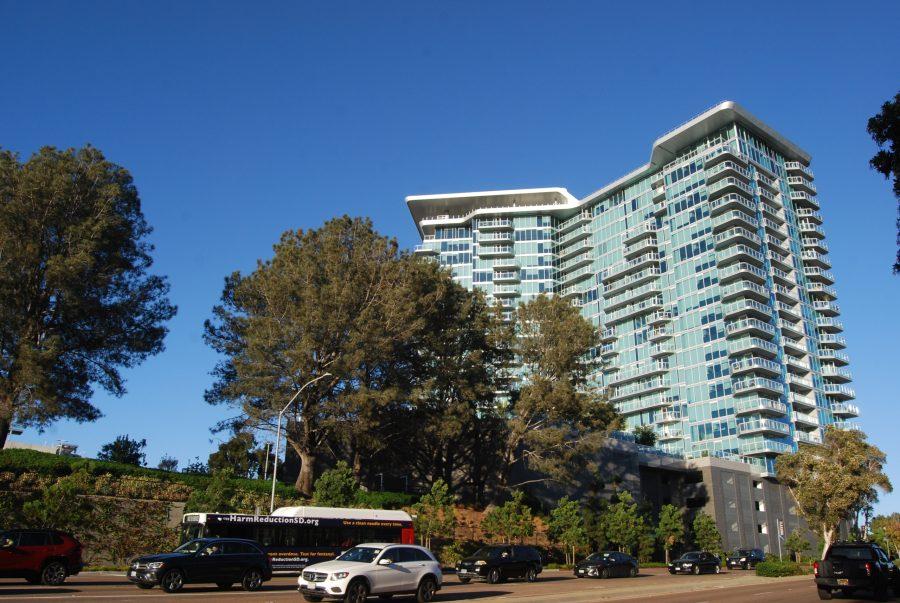A new proposal from the University City Planning Department shows that University City is projected to add/build 35,000 to 56,000 new houses in the upcoming decades — a 215% increase in housing density. This update to the University Community Plan Project will primarily focus on increasing residential density in the Nobel Drive area, La Jolla Village Square, UTC, and shopping areas in Northern and Southern La Jolla.
University City Planning Group Chair Chris Nielsen explained that the community project has five main focus areas based on accessibility to public transportation, especially trolley routes. Included are the Torrey Pines and Campus Point areas — “substantially commercial” locations.
Nielsen pointed out that the two shopping centers located in southern University City constructed more residential housing than biotech or other research buildings around current community retailing service locations. On the other hand, the northern communities are less likely to go through similar changes due to the high number of condos and restrictions on building heights.
Nevertheless, a number of University City residents have voiced concerns about how these changes will impact the character of the community, among them Sixth College fifth-year Hyak Khuylan.
“With significant density, that can be a problem. If everyone has a car and [it can be] hard to find a parking lot, that can lower the living standard. But if there is cheaper housing, grocery stores and whatever you need, I think that would be a good part [of] living in a more dense area.” said Khulyan.
The subcommittee and the city have not yet finalized the proposal. One certain thing is that the current forecast, that the ultimate housing units should be slightly above 28,000 by 2030, will not fit in the subcommittees’ redevelopment plan anymore, and it will not be used as a future target. A number of current residents wonder if the vast difference in future housing units is necessary.
For residents concerned about the upcoming changes to the University City community, Nielsen said, “This is a 20- to 30-year plan, not something that is going to be done tomorrow.”
One significant factor impacting the project is the expansion of public transportation.
“For the residents of South [University City], there’s no effective transit there and probably not going to be for a while. North [University City] is different,” clarified Nielsen. “Generally speaking, [North University City] has good transits, which has probably better frequency and service than anywhere else. So, building higher density in North [University City] does make sense, and it’s likely to occur.”
Khulyan agreed with the value of public transportation in University City.
“If you live anywhere other than University City, you need a car to get to campus. [For those] living in University City, it’s a 15-minute bus ride,” he explained. “But if I live in Mira Mesa or somewhere south, I would need to own a car to get to campus or anywhere else in San Diego. That’s the problem with the way San Diego develops in general.”
However, the project plan update states that student housing needs will not be given special attention.
It states, “The focus of the University Plan Update is to increase opportunities for homes near transit investments for all San Diegans, not just students, especially given that increases in housing for students and faculty connected to UCSD does not alleviate the City’s state obligations to provide additional opportunities for homes.”
Nielsen provided an explanation for this approach. “The single most important thing the University can do is what it’s already doing, which is building more beds on campus, even though that sounds like pushing it back onto the University.” Nielsen elaborated, “but the cheapest housing is always [on] the land [of campus].”
“I think the answer [about future housing price compared to current] is probably not much different,” Nielsen said, “The housing in the area is affected by more than just the supply [and] demand from the local area. It’s kind of global and regional at the same time. People that want units have to do the industries in this area. It’s not just about students and current residents.”
Most junior and senior undergraduate students live in double or even triple rooms off-campus due to the lack of available UCSD housing, fourth-year Roger Revelle College Tanmay Kulkarni noted.
Under intense housing pressure, students turn their expectations to campus.
“The housing can be built, and the school can also subsidize students to help with rent. Maybe [the] school can take some [responsibility] for students looking for housing. The developers can get housing guarantees and students can get cheaper housing. I don’t see how the two are mutually exclusive,” said Khulyan.
For more information, please refer to the University City Plan website or the University Community Planning Area page on the City of San Diego website.
Photo by Sophie Nourbakhsh for the UCSD Guardian














